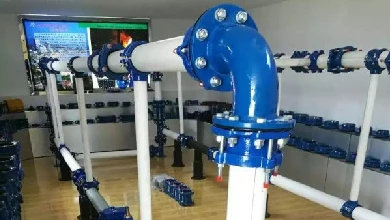air actuated butterfly valve
Air Actuated Butterfly Valve Enhancing Efficiency in Fluid Control
In the realm of fluid control systems, the air actuated butterfly valve stands out as a pivotal component, demonstrating remarkable efficiency and versatility across various applications. This innovative valve design has become increasingly popular in industries such as oil and gas, water treatment, food and beverage, and chemical processing due to its inherent advantages.
Structure and Working Principle
The butterfly valve is characterized by a circular disc that rotates within a pipeline to control the flow of fluids—either to completely block it or allow it to pass through. The air actuated version utilizes pneumatic pressure to move the disc, providing quick and reliable actuation. This mechanism consists of a valve body, a disc, and an actuator. The actuator is linked to an air supply that generates pressure, allowing for swift opening and closing of the valve.
The simplicity of the design is one of its greatest strengths. When air pressure is applied to the actuator, it rotates the disc to the desired angle, enabling precise flow control. Conversely, when the pressure is released, a spring mechanism helps return the valve to its original position. This feature not only enhances operational efficiency but also minimizes the risk of equipment malfunction.
Advantages of Air Actuated Butterfly Valves
1. Quick Response Time Air actuated butterfly valves can achieve rapid actuation, making them ideal for systems requiring quick reaction times. This characteristic is particularly beneficial in applications where flow needs to be adjusted rapidly to fluctuating demands.
2. Energy Efficiency Compared to electric actuators, pneumatic systems often consume less energy. This efficiency translates into lower operational costs and reduced carbon footprints, making air actuated butterfly valves environmentally friendly solutions.
air actuated butterfly valve

3. Reduced Space Requirement The compact design of butterfly valves means they occupy less space than other types of valves, such as gate or globe valves. This feature is especially useful in installations where space is limited or where multiple valves are needed in close proximity.
4. Versatility Air actuated butterfly valves can be utilized in a variety of applications, from regulating the flow of water in treatment plants to managing gas flows in industrial settings. The ability to handle different pressures and temperatures further enhances their versatility.
5. Maintenance and Durability These valves are designed for longevity, with minimal moving parts that reduce wear and tear over time. Routine maintenance is usually straightforward, contributing to lower downtime and operational costs.
Applications
The use of air actuated butterfly valves extends across multiple industries. In the water treatment sector, they regulate water flow efficiently, ensuring proper treatment processes. In the food and beverage industry, these valves help maintain hygiene and compliance with regulatory standards due to their simple design, which reduces the accumulation of deposits. In the oil and gas sector, they provide effective control of high-pressure liquids and gases, ensuring safety and operational integrity.
Conclusion
As industries continue to seek innovative solutions for fluid control, the air actuated butterfly valve emerges as a leading choice. Its ability to provide quick actuation, energy efficiency, and versatility makes it a valuable asset in numerous applications. Future advancements in materials and automation technology may further enhance the performance and reliability of these valves, solidifying their role as indispensable components in modern fluid management systems. Whether for small-scale operations or large industrial processes, the air actuated butterfly valve represents a smart investment in efficiency and effectiveness.
-
The Smarter Choice for Pedestrian AreasNewsJun.30,2025
-
The Gold Standard in Round Drain CoversNewsJun.30,2025
-
The Gold Standard in Manhole Cover SystemsNewsJun.30,2025
-
Superior Drainage Solutions with Premium Gully GratesNewsJun.30,2025
-
Superior Drainage Solutions for Global InfrastructureNewsJun.30,2025
-
Square Manhole Solutions for Modern InfrastructureNewsJun.30,2025
-
Premium Manhole Covers for Modern InfrastructureNewsJun.30,2025
